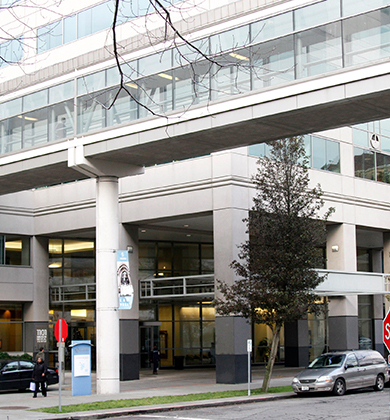Rhinoplasty Glossary
| A-C | D-G | H-K | L-P | Q-S | T-Z |
A-C
Ala - the skin along the sides of the nose, near the nostril
Alar - relating to the ala
Alae - plural of ala
Alar base - where the nostrils meet the upper lip
Alar base reduction - a surgical step in rhinoplasty to narrow excessively wide nostrils
Alar batten graft - a type of cartilage graft placed along the alar sidewall to support the nose and treat external valve collapse. See a video of alar batten graft placement using a closed approach here.
Alar facial sulcus - where the nostrils (alae) meet the side of the cheek
Alar groove - the continuation of the alar facial sulcus running parallel to the nostril margin toward the tip of the nose.
Alar margin - the lower margin or rim of the ala, forming the side entrance to the nostrils
Alar notch - see alar retraction
Alar retraction - notching or undesirable elevation of the nostril margin which results in excessive columellar show; may be the result of excessive cartilage removal during rhinoplasty
Alloderm - a type of natural graft used in rhinoplasty to smooth out the bridge of the nose
Anterior - toward the front (opposite is posterior)
Batten - a type of graft (typically made from cartilage) used during rhinoplasty to provide structural support to the external nasal valve and alar sidewall. See also alar batten graft.
Bifid - term used to describe a situation where there is a distinct midline groove or cleft in the tip or columella.
Bossae - sharp twists or bends in cartilage that may be visible through thin nasal skin and sometimes appear after rhinoplasty
Bridge - section of nose running from forehead to the tip of the nose (also known as the dorsum)
Cartilage - the moderately firm yet pliable material of the middle and lower thirds of the nasal tip (upper lateral cartilage, lower lateral cartilage) and the septum
Caudal - anatomic directional term referencing an area toward the "tail," downward or inferior. In nasal anatomy refers to an area toward the nasal base.
Caudal septum - that portion of the septum found just inside the nostril, the most inferior portion of the septum. When deviated can lead to asymmetric nostrils.
Cephalic - anatomic directional term referencing an area toward the head, upward or superior
Cephalic trim - rhinoplasty maneuver involving partial excision of the lower lateral cartilage along its long axis (cephalic border) to create tip narrowing and rotation. See an intra-operative video of cephalic trim surgery here.
Closed rhinoplasty - also known as endonasal rhinoplasty, this is a rhinoplasty approach that uses only internal (endonasal) incisions. This approach avoids a columellar scar but limits direct visualization of the nasal anatomy and precludes the use of many advanced rhinoplasty techniques. Learn more about the open versus closed rhinoplasty approach here.
Columella - the visible bridge of tissue that separates the two nostrils
Columellar show - the amount of the nostril partition that may be seen on the side view, ideally no more than 3-5 mm. Can be excessive due to a either a hanging columella, alar retraction or both.
Columellar strut - a graft (typically made of septal cartilage) used during rhinoplasty to support and strengthen the columella, thus providing support and stability to the nasal tip
Concave - caving inward
Convex - bending outward
Costal - relating to rib
D-G
Deviated - crooked
Deviated septum - a septum that is not in the midline. It may be tilted to one side, have a bend within it or have a bony spur blocking the airway. A deviated septum can be fixed in a procedure called a septoplasty. You can watch a video of septoplasty surgery here.
Dome - the hinge point of the nasal tip where the intermediate crura and lateral crura meet. It is also the tip defining point of the nose.
Dorsum - the bridge of the nose
Dorsal - referring to dorsum
Dorsal hump - a convexity on the bridge (or dorsum) of the nose, typically made up of cartilage and bone. Learn more about hump reduction here.
Dorsal reduction - a step in rhinoplasty to remove a hump from the bridge of the nose
Endonasal rhinoplasty - technique of rhinoplasty that uses entirely internal incisions. See also closed rhinoplasty.
Endoscopic sinus surgery - surgery done through the nostrils with small telescopes to treat chronic sinusitis by opening up the natural openings of the sinuses into the nose. This may also involve removal of nasal polyps and chronically inflamed sinus skin lining. See also FESS.
External nasal valve - defined by the angle between the nasal septum and the lower lateral cartilages (LLC)
Fascia - type of soft tissue graft composed of the natural covering over muscle. Often harvested from the temporalis muscle above the ear.
FESS - acronym for Functional Endoscopic Sinus Surgery. Modern approach to sinus surgery in which the natural drainage pathways of the sinuses into the nose are opened up.
Gore-Tex - a type of synthetic implant used in rhinoplasty, typically for reconstruction of the nasal bridge in revision rhinoplasty
Graft - term used to describe natural structural material used during rhinoplasty. The most common types of grafting material in rhinoplasty include cartilage (from the septum, ear or rib), bone (from the nose, rib, or skull), and soft tissue (Alloderm, fascia or fat)
H-K
Hump - a convexity (bump) over the bridge of the nose. See also Dorsal Hump.
Hanging columella - a term used to describe a columella that protrudes down more than ideal leading to excessive columellar show. Learn about hanging columella repair here.
Implant - term used to describe synthetic structural material used during rhinoplasty. The most common types of implant material in rhinoplasty include Gore-Tex, Medpor, and Silicone (silastic).
Inferior turbinate - the lowest of the turbinates (soft tissue and bony out-pouching) inside the nose. When enlarged it can significantly impede airflow through the nose. See also turbinate reduction.
Infratip - the region just below the tip
Intermediate crura - that portion of nasal tip cartilage where the medial crura transition to become the domes in an area that coincides with the infra-tip lobule
Internal nasal valve - typically the narrowest portion of the nasal passages, this is an angle defined by the fusion of the nasal septum and the upper lateral cartilages (ULC). Collapse of the internal nasal valve is treated with spreader grafts.
Inverted-V deformity - nasal bridge deformity resulting from excessive narrowing of the middle nasal vault compared with the adacent nasal bones. It can be caused by aggressive hump reduction in which the middle third of the nose isn't prophylactically supported with spreader grafts.
Back to Top
L-P
Lower lateral cartilages - paired cartilages that make up the tip of the nose (abbreviated as LLC)
Lateral - anatomic term meaning toward the side
Medial - anatomic term meaning toward the center or midline
Medial crura - paired nasal tip cartilages that make up the columella
Nasal bones - paired bones that make up the firm upper third of the nasal skeleton. When excessively wide the nasal bones can be made narrower.
Nasal sill - the floor of the nasal vestibule or inner nostril area.
Nasal tip - the tip of the nose whose structure is determined by the shape of the paired lower lateral cartilages (LLC)
Nasal valve - internal and external nasal valves are vital in nasal airway function
Nasion - the point where the nose separates from the forehead, ideally located roughly at the level of the crease of the upper eyelid
Nasofrontal angle - the angle between the nose and the forehead
Nasolabial angle - the angle between the nose and the upper lip. Also acts as a measure of tip rotation.
Nasopharynx - the very back portion of the nose where the upper throat ends above the soft palate
Nostrils - paired openings in the nose where air passes
Open rhinoplasty - advanced rhinoplasty technique allowing excellent visualization of nasal structures using placement of a small incision across the columella. Most rhinoplasty experts agree that this is the approach of choice for patients with complex anatomy or in revision rhinoplasty cases. Learn about open versus closed rhinoplasty here.
Osteotomy - controlled cuts made in nasal bones (using a fine osteotome or chisel) during rhinoplasty to allow reshaping and repositioning of deviated or wide nasal bones
Osteotomies - plural of osteotomy
Perichondrium - thin soft tissue covering found oover cartilage that can be used during rhinoplasty as a grafting material
Periosteum - thin soft tissue covering found over bone
Posterior - toward the back (opposite is anterior)
Primary rhinoplasty - refers to a first time rhinoplasty in a previously unoperated on nose.
Projection - how far the nose extends away from the plane of the face
Q-S
Quadrangular cartilage - portion of the nasal septum made up of cartilage
Radix - term used to describe the root of the nose (similar to nasion) in the area where the nose starts between the eyes. When under-developed can lead to a pseudohump deformity.
Rasp - instrument used to file down bone during rhinoplasty
Rhinion - the point on the nasal bridge where the bone and the cartilage meet at the mid-portion of the nose; also where the nasal skin is typically the thinnest
Rib graft - when cartilage from the chest (rib) is used to rebuild the bridge of the nose, typically in revision rhinoplasty
Rotation -description of how upturned or down-turned (droopy) the tip is.
Saddle Nose deformity - external and functional deformity involving collapse of the middle third of the nose. It can be caused by autoimmune disease, cocaine abuse, trauma, and over-aggressive cosmetic nasal surgery.
Secondary rhinoplasty - refers to re-operation of a previously operated on nose. Also called revision rhinoplasty, secondary rhinoplasty is typically more complex due to prior scar tissue and structural damage.
Septal extension graft - cartilage graft that is sutured to the caudal (anterior) septum for maximal support. It is commonly used to lengthen a short nose.
Septum - a midline partition between the right and left nasal cavities made of cartilage in the front and thin bone toward the back. It is also covered by nasal skin lining (mucosa) on either side.
Septoplasty - surgical correction of a deviated septum, often performed at the same time as rhinoplasty
Sinuses - Air-filled chambers inside the bones of the face that have narrow openings that allow drainage into the nose. These sinuses include the maxillary (over the cheeks), ethmoid (between the eyes), frontal (over the forehead) and sphenoid (in the back of the nose) sinuses.
Sinus surgery - surgical procedure, typically done using small endoscopes (telescopes) through the nostrils, that helps further open up the natural opening of the sinuses into the nose. This can also involve the removal of polyps and chronically inflammed sinus mucosa. See also FESS and Functional endoscopic sinus surgery.
Splint - a rigid supporting dressing used in rhinoplasty to help maintain the desired shape during healing
Spreader graft - a type of cartilage graft used in rhinoplasty to strengthen the nasal bridge and to improve the patency and function of the internal nasal valve.
Structure based rhinoplasty - a rhinoplasty surgical philosophy in which the underlying nasal framework is reconfigured to maximize its aesthetic beauty while at the same time being structural reinforced to ensure long term results and to maintain proper nasal function.
Strut - a type of cartilage graft used in rhinoplasty to strengthen or straighten another structure
Supra-alar groove - subtle depression just above the nostril margin. Learn more topographic nasal anatomy here.
Supratip - the region just above the tip of the nose
Supratip break - a small dip, considered aesthetically pleasing, just above the tip of the nose
Sidewall - the sides of the nose above the alar groove. There is a cartilaginous sidewall and a bony sidewall
T-Z
Tip - general term used to describe the nasal tip
Turbinate - Multiple paired out-pouchings (3 on each side of the nose) of bone covered with mucous membranes inside the nose that humidify, filter, and warm the inspired air. When excessively large, the turbinates can cause nasal obstruction. See also inferior turbinate and turbinate reduction.
Turbinate reduction - process of reducing the bulkiness of the inferior turbinate inside the nose. This can be done using a shaver, cautery or radiofrequency ablation.
Upper lateral cartilages - paired triangular cartilages, extending from under the nasal bones above to the upper edge of the lower lateral cartilages (LLC) below, and to the nasal septum in the midline (Acronym ULC)
Vestibule - the opening to the inside of the nose
Vestibular - relating to the vestibule
Vibrasie - hairs on the vestibular skin just inside the nostrils
Thanks for doing such a good job with my rhinoplasty surgery.
LM - Anchorage, AK View More Patient Testimonials ›Schedule your In-Office or Virtual Consultation with Dr. Lamperti
Thomas Lamperti, MD personally performs all in-office and virtual consultations where you will be able to learn about your customized cosmetic or reconstructive surgery options.



